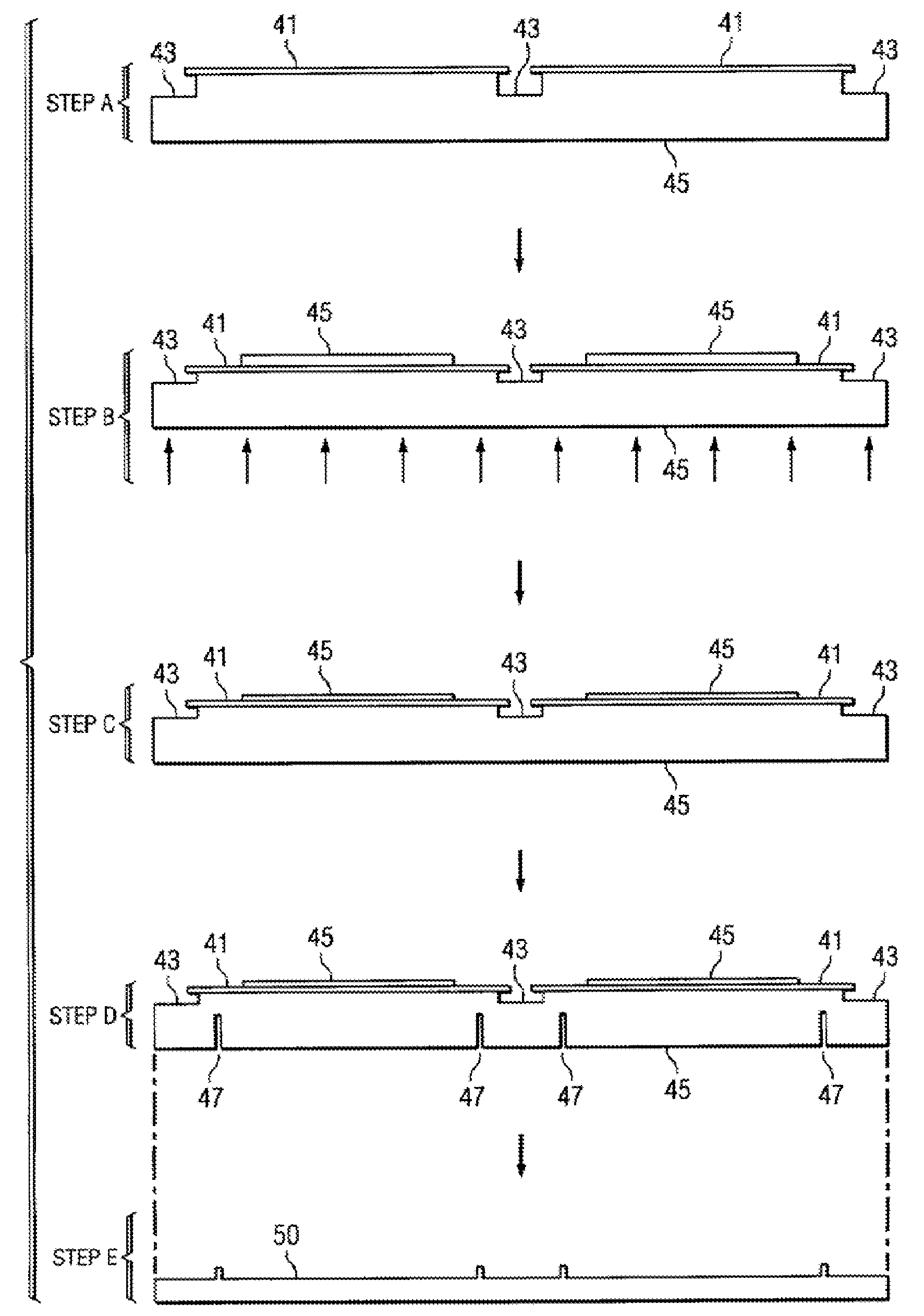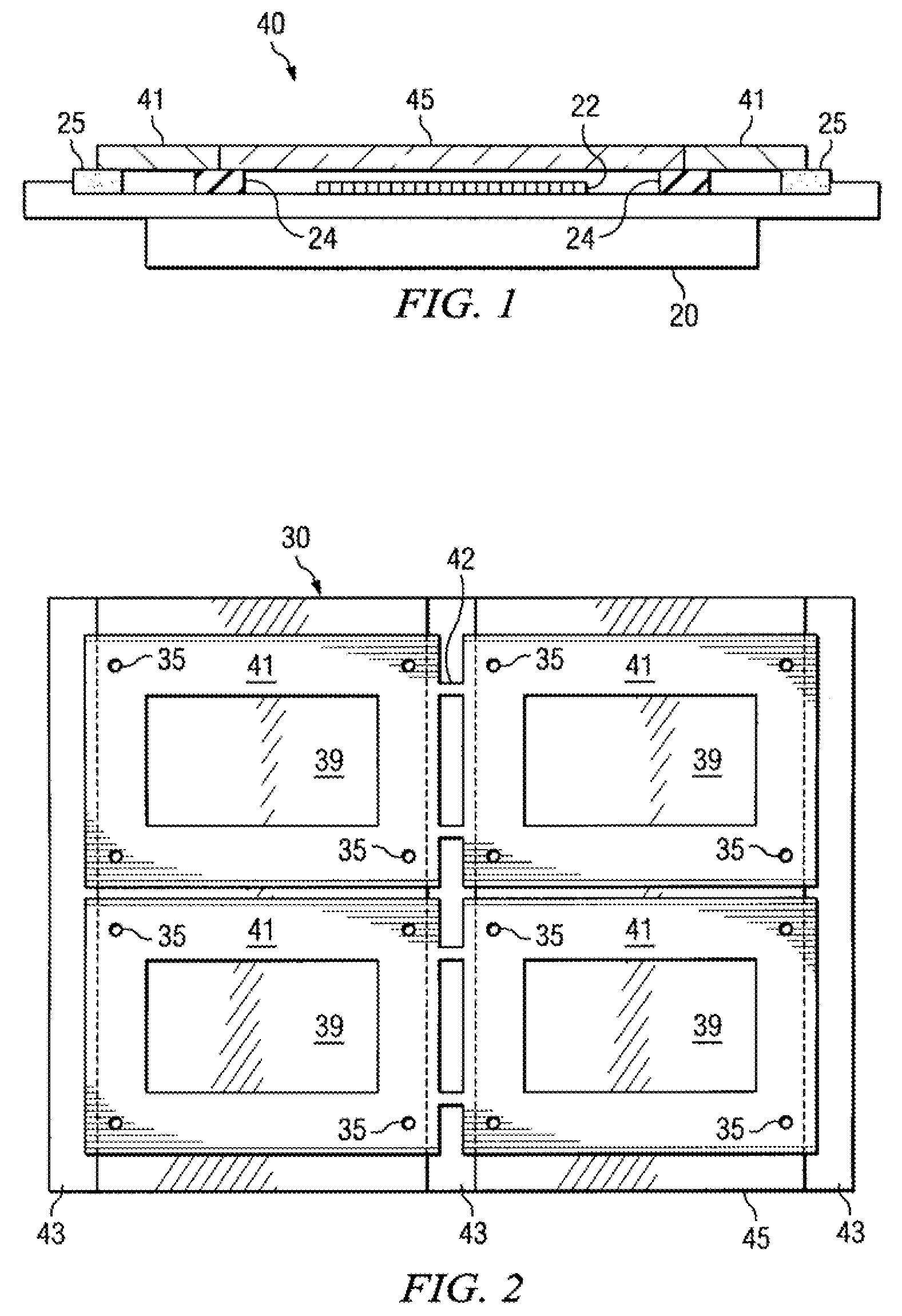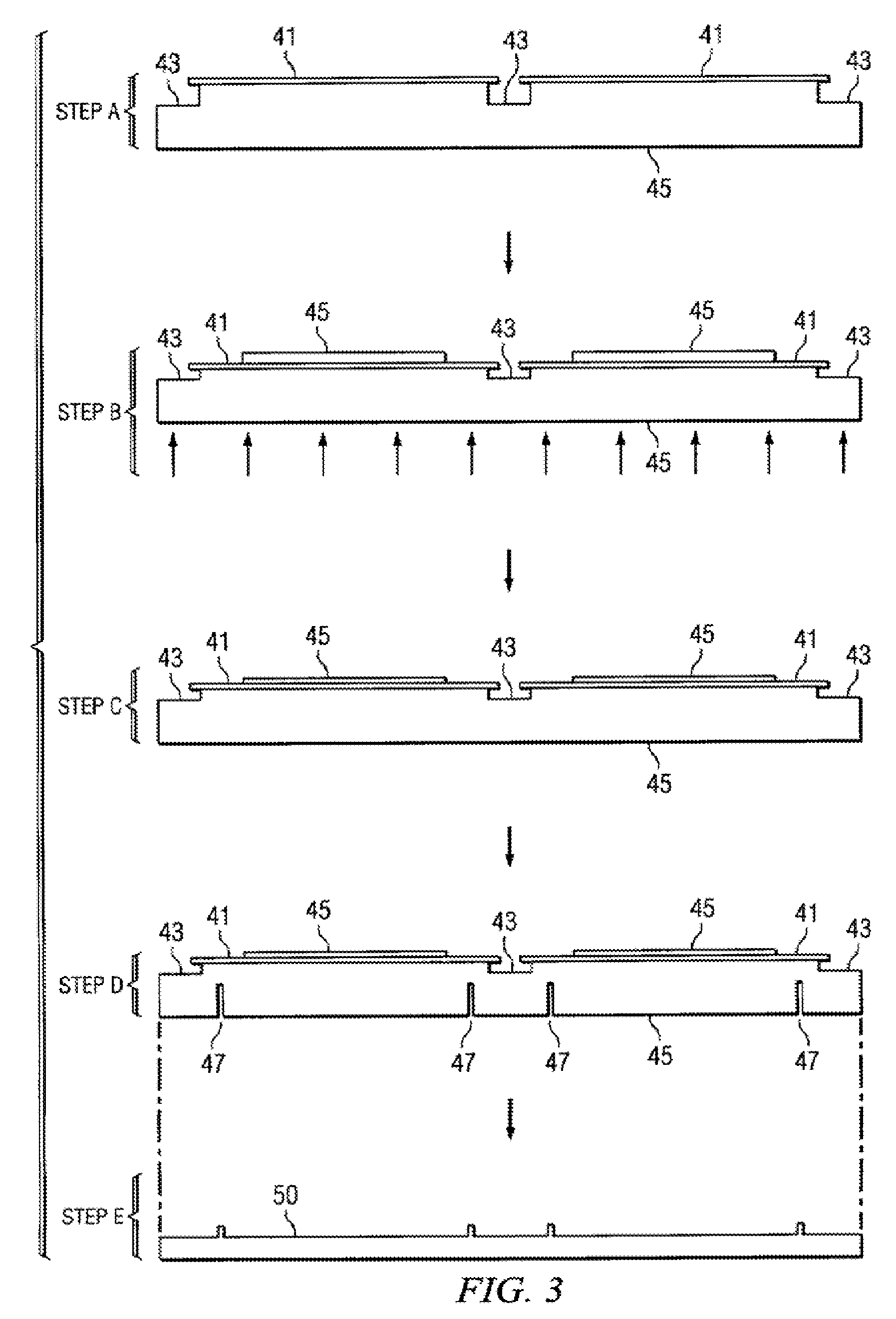Low cost window production for hermetically sealed optical packages
a technology of optical packaging and low cost, which is applied in the direction of optical elements, instruments, other domestic objects, etc., can solve the problems of dust particles affecting the proper functioning of the active elements of such micro-devices, affecting the surface finish of the glass, and affecting the efficiency of the production process, so as to maximize the effectiveness of combined techniques, reduce time and labor, and improve the effect of production process efficiency
- Summary
- Abstract
- Description
- Claims
- Application Information
AI Technical Summary
Benefits of technology
Problems solved by technology
Method used
Image
Examples
Embodiment Construction
[0018]The disclosed embodiments relate to methods for manufacturing windows for micro-devices using batch processing techniques to improve efficiency. While disclosed embodiments relate broadly to optical MEMS devices, the specific examples set forth in the figures below may illustrate DMD packages. Thus, any reference to DMD is intended to broadly include all optical MEMS devices. FIG. 1 shows a typical DMD package 20 with a window 40 hermetically sealing the package 20 to protect the active elements of the DMD 22 from contamination or other environmental factors that might reduce operational effectiveness. While these windows 40 have previously been constructed one at a time, the embodiments disclosed below provide a more cost-effective batch processing technique that allows for steps of the manufacturing process to be performed simultaneously upon multiple windows.
[0019]The basic physical elements that come together in this process in order to simultaneously form multiple windows...
PUM
| Property | Measurement | Unit |
|---|---|---|
| thick | aaaaa | aaaaa |
| glass transition temperature | aaaaa | aaaaa |
| diameter | aaaaa | aaaaa |
Abstract
Description
Claims
Application Information
 Login to View More
Login to View More - R&D
- Intellectual Property
- Life Sciences
- Materials
- Tech Scout
- Unparalleled Data Quality
- Higher Quality Content
- 60% Fewer Hallucinations
Browse by: Latest US Patents, China's latest patents, Technical Efficacy Thesaurus, Application Domain, Technology Topic, Popular Technical Reports.
© 2025 PatSnap. All rights reserved.Legal|Privacy policy|Modern Slavery Act Transparency Statement|Sitemap|About US| Contact US: help@patsnap.com



